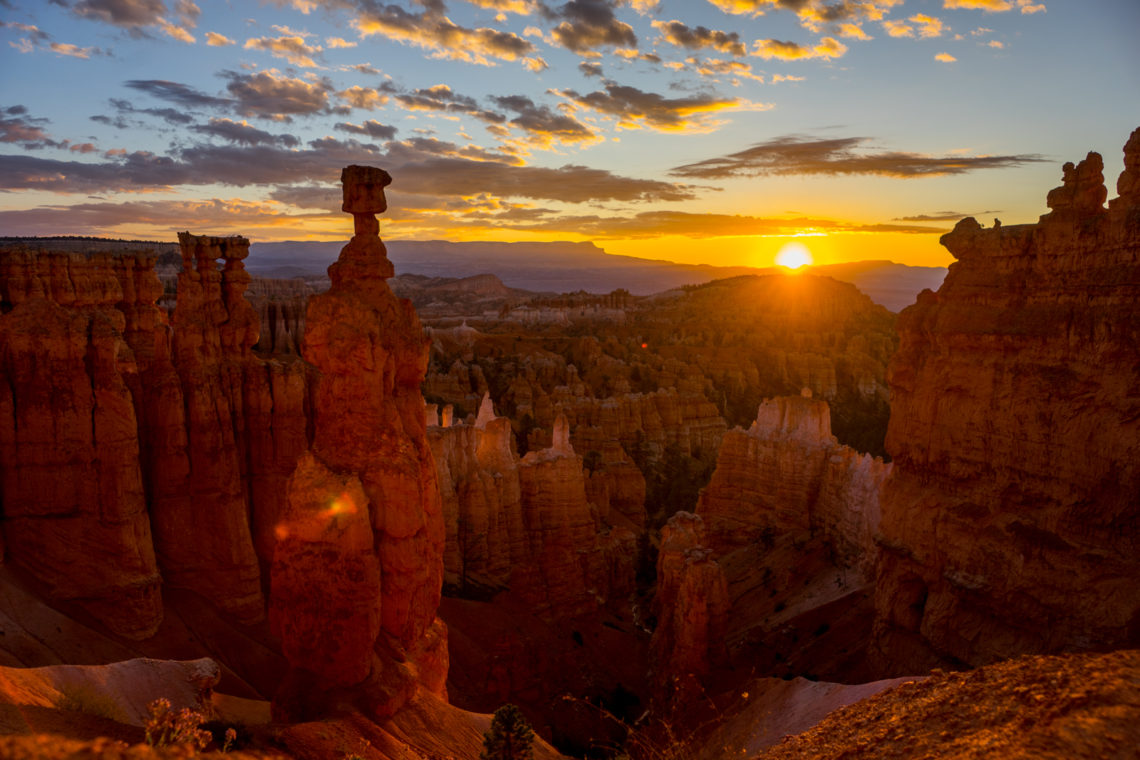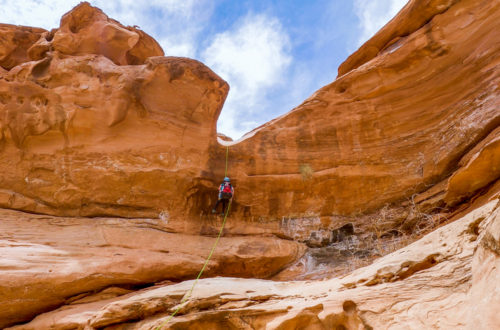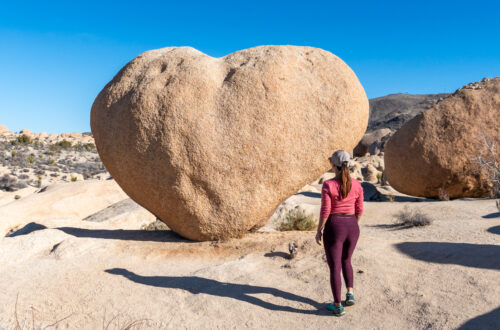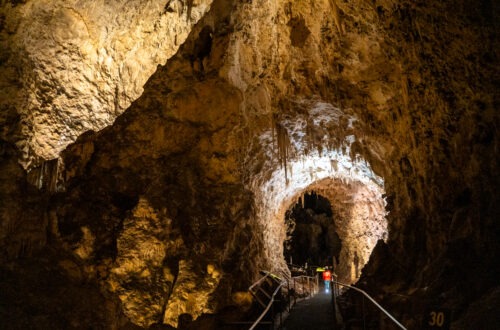To check out these awesome hoodoos, don’t forget to check out our blog on Bryce Canyon.
WHAT ARE HOODOOS?
Hoodoo (also known as tent rock, fairy chimney or earth pyramid) is a tall, thin spire of rock that protrudes from the bottom of an arid drainage basin or badland. Hoodoos typically consist of relatively soft rocks topped by harder, less easily eroded stone that protects each column from the elements. They generally form within sedimentary rock and volcanic rock formations.

Hoodoos are found mainly in the desert in dry, hot areas. In common usage, the difference between hoodoos and pinnacles (or spires) is that hoodoos have a variable thickness often described as having a “totem pole-shaped body”. Spires, on the other hand, have a smoother profile or uniform thickness that tapers from the ground upward. An example of a single spire, as an earth pyramid, is found at Aultderg Burn, near Fochabers, Scotland.
Hoodoos range in size from the height of an average human to heights exceeding a 10-story building. Hoodoo shapes are affected by the erosional patterns of alternating hard and softer rock layers. Minerals deposited within different rock types cause hoodoos to have different colors throughout their height.

HOW ARE THEY FORMED?
Hoodoos typically form in areas where a thick layer of relatively soft rocks (mudstone, poorly cemented sandstone or tuff) is covered by a thin layer of hard rocks (well-cemented sandstone, limestone or basalt). In glaciated mountainous valleys, the soft eroded material may be glacial till with the protective capstones being large boulders in the till. Over time, cracks in the resistant layer allow the much softer rock beneath to be eroded and washed away. Hoodoos form where a small cap of the resistant layer remains, and protects a cone of the underlying softer layer from erosion. The heavy cap pressing downwards gives the pedestal of the hoodoo its strength to resist erosion. With time, erosion of the soft layer causes the cap to be undercut, eventually falling off, and the remaining cone is then quickly eroded.

Typically, hoodoos form from multiple weathering processes that continuously work together in eroding the edges of a rock formation known as a fin. For example, the primary weathering force at Bryce Canyon is frost wedging. The hoodoos at Bryce Canyon experience over 200 freeze/thaw cycles each year. In the winter, melting snow, in the form of water, seeps into the cracks and then freezes at night. When water freezes it expands by almost 10%, pries open the cracks bit by bit, making them even wider, much like the way a pothole forms in a paved road.

In addition to frost wedging, rain is another weathering process causing erosion. In most places today, the rainwater is slightly acidic, which lets the weak carbonic acid slowly dissolve limestone grain by grain. It is this process that rounds the edges of hoodoos and gives them their lumpy and bulging profiles. Where internal mudstone and siltstone layers interrupt the limestone, you can expect the rock to be more resistant to the chemical weathering because of the comparative lack of limestone. Many of the more durable hoodoos are capped with a special kind of magnesium-rich limestone called dolomite. Dolomite, being fortified by the mineral magnesium, dissolves at a much slower rate, and consequently protects the weaker limestone underneath it. Rain is also the chief source of erosion (the actual removal of the debris). In the summer, monsoon type rainstorms travel through the Bryce Canyon region bringing short duration of high-intensity rain.
WHERE CAN THEY BE FOUND?
Hoodoos are commonly found on the Colorado Plateau and in the Badlands regions of the northern Great Plains (both in North America). While hoodoos are scattered throughout these areas, nowhere in the world are they as abundant as in the northern section of Bryce Canyon National Park, located in the U.S. state of Utah. Hoodoos are also very prominent a few hundred miles away at Goblin Valley State Park on the eastern side of the San Rafael Swell.

Hoodoos (peribacası) are also found in the Cappadocia region of Turkey, where houses have been carved into the formations. The hoodoos were depicted on the reverse of the Turkish 50 new lira banknote of 2005–2009.
In French, the formations are called demoiselles coiffées (ladies with hairdos) or cheminées de fées (fairy chimneys) and several are found in the Alpes-de-Haute-Provence. One of the best-known examples is the formation called Demoiselles Coiffées de Pontis.
The Awa Sand Pillars in Tokushima Prefecture, Japan are hoodoos made from layers of compacted gravel and sandstone.

Đavolja Varoš (Devil’s Town) hoodoos in Serbia feature about 200 formations described as earth pyramids or towers by local inhabitants. Since 1959, Đavolja Varoš has been protected by the state. The site was also a nominee in the New Seven Wonders of Nature campaign.
The hoodoo stones on the northern coast of Taiwan are unusual for their coastal setting. The stones formed as the seabed rose rapidly out of the ocean during the Miocene epoch. Efforts have been made to slow the erosion in the case of iconic specimens in Wanli.
The hoodoos in Drumheller, Alberta are composed of clay and sand deposited between 70 and 75 million years ago during the Cretaceous Period. These hoodoos are able to maintain a unique mushroom-like appearance. It is because the underlying base erodes at a faster rate compared to the capstones at nearly one centimeter per year, faster than most geologic structures.
Happy Adventuring. Don’t forget to follow us on Instagram, subscribe to our Youtube channel, and sign up for our newsletter!






